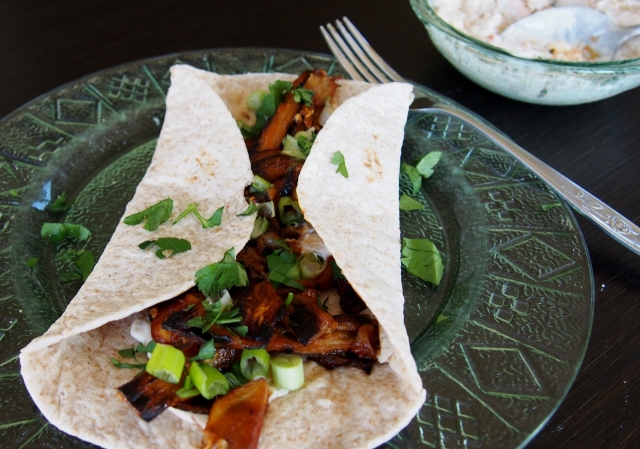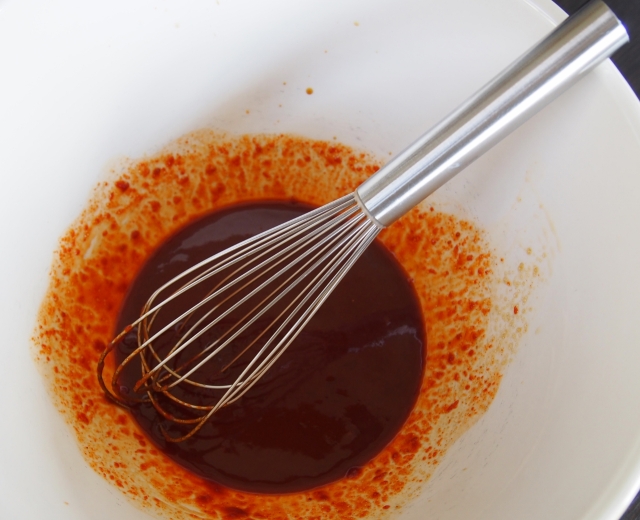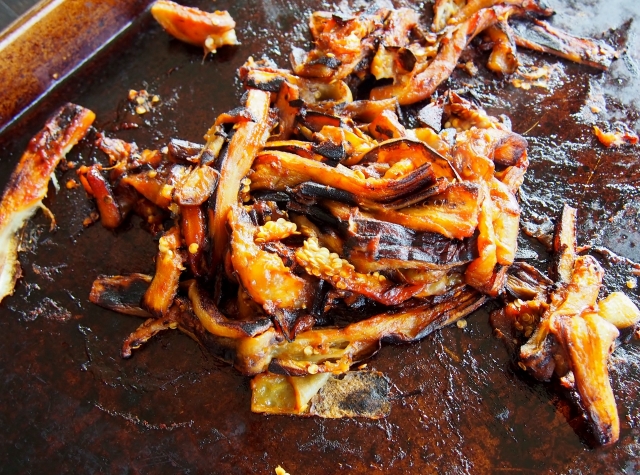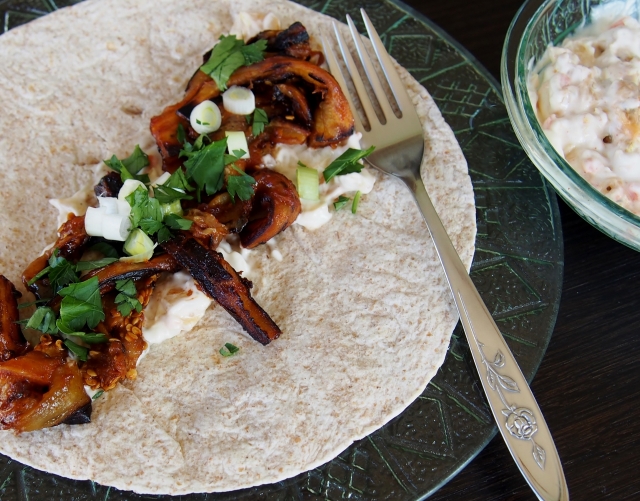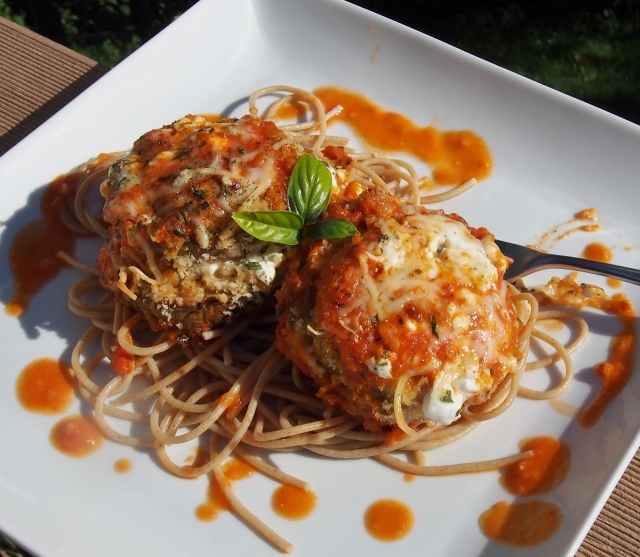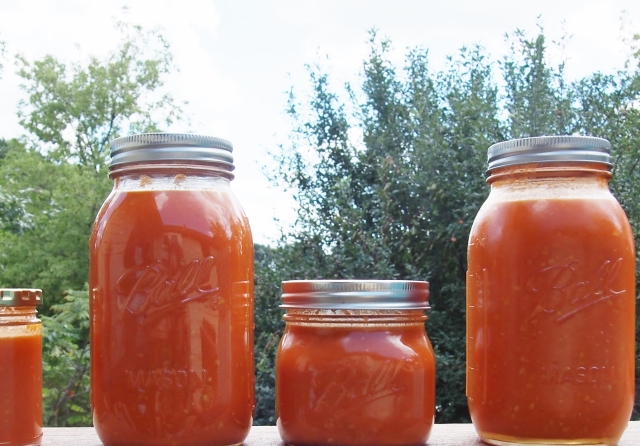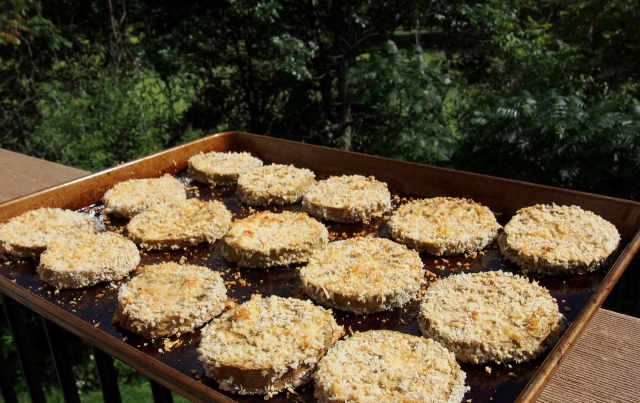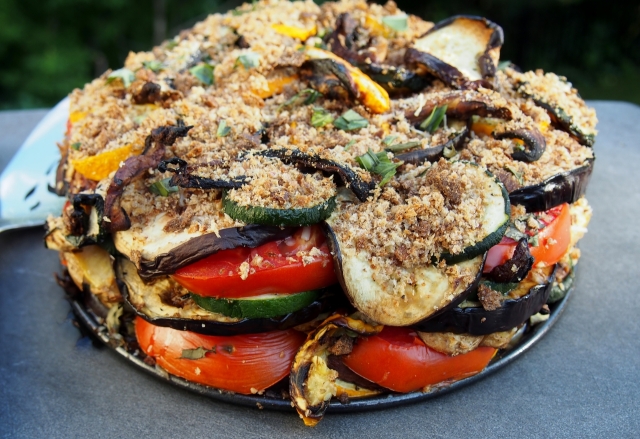
If you’re at all like me, you tend to over shop at the farmers market. Everything looks so darned good and fresh and healthy! Who cares that I don’t like zucchini when that cute basket is full of such a pretty combination of green and yellow—stripes, dapples and solids? And the eggplant—such luscious shades of purple and lavender, the plump Italian variety and the petite Japanese—those colors go so well in my kitchen!
On and on it goes with all varieties of carrots, peppers, potatoes, etc., plus our garden is now producing cucumbers, tomatoes, beets, beans, and herbs galore, so I’m all for recipes that incorporate many different types of produce into one dish. Thus I was thrilled to come across this Layered Vegetable Torte from New York Times Cooking, one of my go-to sites when I’m looking for inspiration. Featured are great recipes by Melissa Clark, Mark Bittman, Martha Rose Shulman, David Tanis and more, plus the occasional classics of Julia Child and Jacques Pepin. So many talented chefs sharing their knowledge in one place—cooking nirvana!
Making delicious use of generous amounts of zucchini/summer squash, eggplant, tomatoes, garlic, basil and portabella mushrooms, you can now go back to the farmers market and stock up with a clear conscious. Vary the veggies if you wish, incorporating bell peppers, onions, cooked greens, etc. if you’re not feeling the zucchini or mushroom love. Eggplant makes a nice base, so I’m not sure you’d want to swap that out.
Serve on top of a puddle of spicy arrabbiata or marinara sauce and/or a wee bit of pesto and you’ve got yourself a sophisticated, healthy and hearty meal that will stimulate the senses and satisfy your appetite. Enjoy!
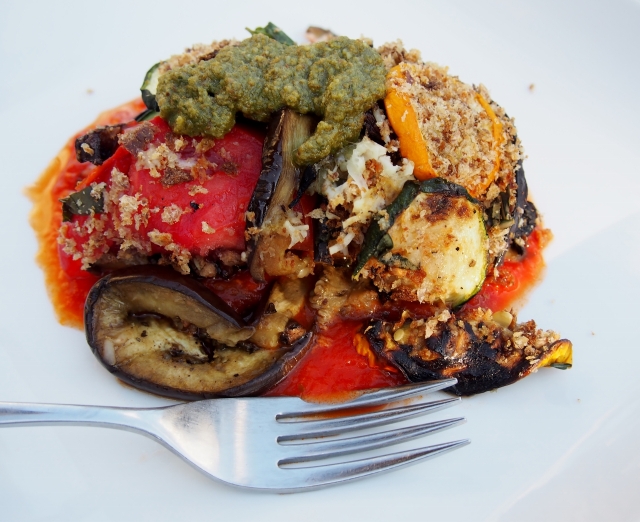
Layered Vegetable Torte
1 large or two small eggplant, cut into 1/4-inch slices
4 medium zucchini or yellow squash, cut into 1/4-inch slices
2 Portobello mushrooms, cut into 1/4-inch slices
½ cup extra virgin olive oil, or more as needed
Salt
Freshly ground black pepper
2 plum or regular tomatoes, cut into 1/4-inch slices
2 tablespoons minced garlic
¼ cup chopped fresh basil leaves
¼ cup freshly grated Parmesan
½ cup bread crumbs, preferably whole wheat and preferably fresh
Preheat oven to 400 degrees F. Preheat your grill to medium-high heat. Brush eggplant, zucchini and mushrooms lightly with half the oil and sprinkle with salt and pepper. If you don’t have access to a grill, you can roast the vegetables at 400 degrees F. in the oven using two oiled baking sheets. Roast or grill vegetables on both sides until soft—about 10-15 minutes whether on the grill or in the oven.
Coat the bottom and sides of an 8-inch spring-form pan with olive oil (if using a 9-inch pan, increase the veggies a bit). Layer a third of the eggplant slices into bottom of the pan, then layer in half the zucchini, mushrooms, tomato, garlic and basil, sprinkling each layer with a bit of salt and pepper. Repeat layers until all vegetable are used. Press the top with a spatula or spoon to make the torte as compact as possible. Sprinkle top with Parmesan and bread crumbs, and drizzle with about 1 tablespoon oil.
Bake the torte in oven until hot throughout and browned on top, about 30 minutes. Let sit for 5 minutes before removing the outer ring of pan, and then let cool for another 10 minutes before cutting into wedges. Serve with red sauce and/or pesto, if desired. Makes 4-6 servings.

